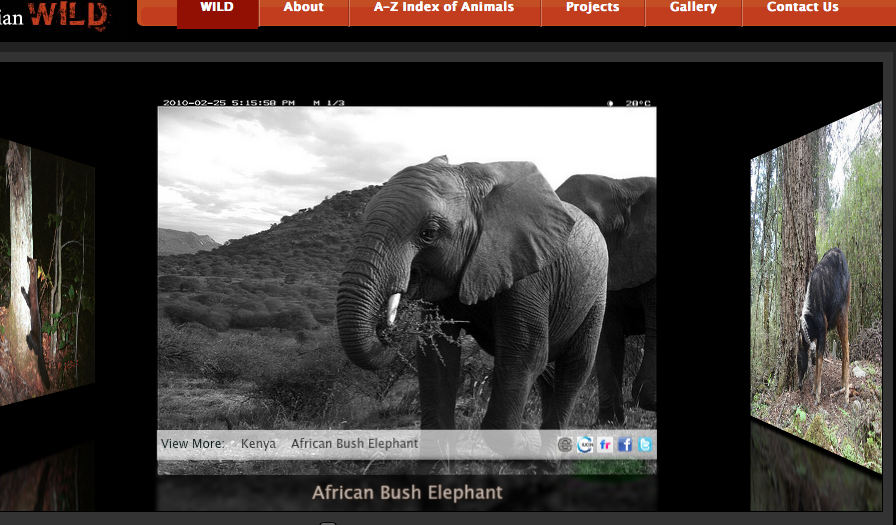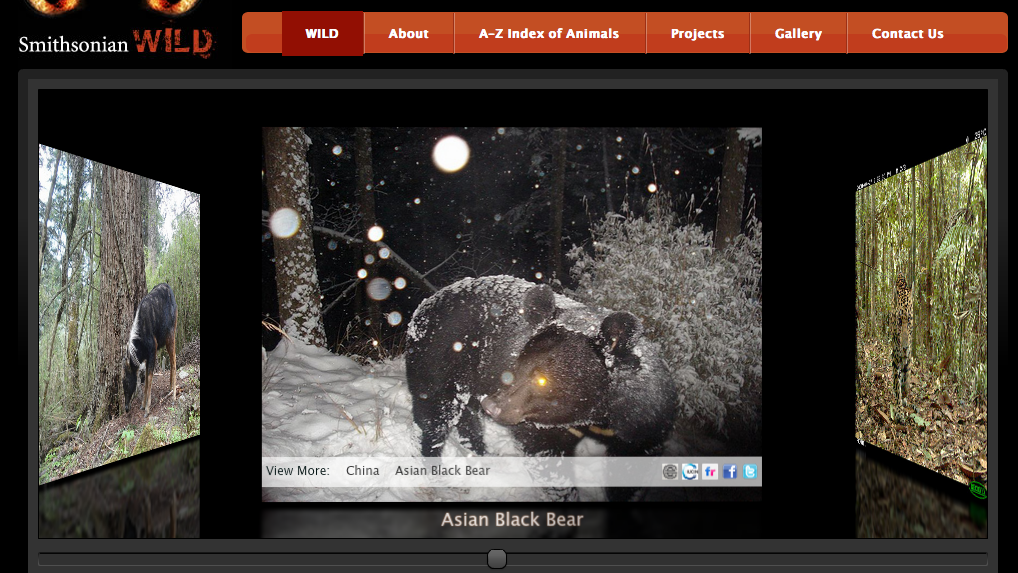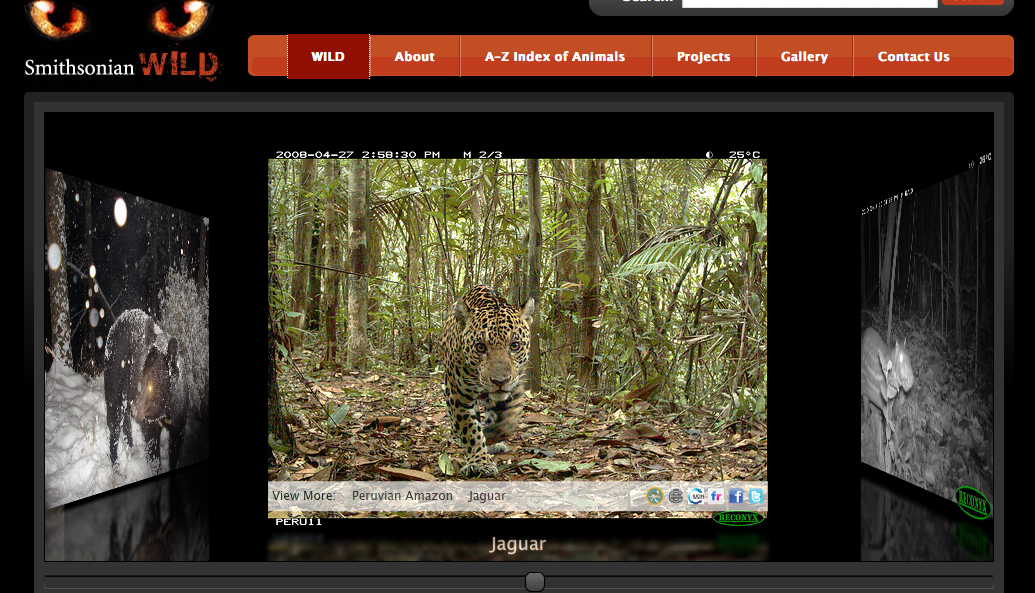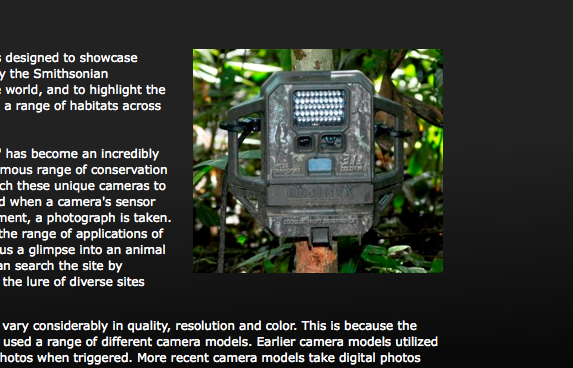
Image Credit: Screenshot of Smithsonian Wild
Many of us are suckers for cute animal videos, trips to the aquarium, and documentaries featuring David Attenborough. We can now add to the list of ways to watch animals this new web feature offered by the Smithsonian, which gives us "a glimpse into an animal world that
is rarely seen by anyone." The pictures are taken with secret cameras, promising the viewer a more authentic experience, one with minimal human interaction.

Image Credit: Screenshot of Smithsonian Wild
Looking at these photos causes me to think about what's implied by our visual engagement with animals. For obvious reasons, access to wild animals is limited; therefore, we regular folk are necessarily placed in the role of voyeurs (unless you're a crazy snake man in certain parts of Florida). Usually, the pleasure we take in watching animals is both excused and rationalized by our insistence that we gain from them a new sense of knowledge. Continuing in this rhetoric, Smithsonian Wild explains their mission: "Our hope is that while you are being entertained by the amazing
photographs, you will also learn about the animals, their diverse
habitats, and what is being done to conserve them."

Image Credit: Screenshot of Smithsonian Wild
However, with the anniversary of the death of the orca trainer at SeaWorld, I wonder if times may be changing for how we perceive the role of zoos and aquariums in our culture. I've also noted, and here I confess the time I've spent watching Animal Planet, the number of shows dedicated to what happens when people get too close. See these videos from Fatal Attractions, which offers a different sense of voyeurism.

Image Credit: Screenshot of Smithsonian Wild
Is digital access to animals the responsible way to go? Can these
photographs provide a visual pleasure that replaces the guilt-inducing
zoo experience? Indeed, the fact that many of these photographs were
taken under night surveillance (look at those eyes!) adds an immediacy
and sense of the forbidden. We're not supposed to be seeing what we
do. Then again, I wonder if these photographs offer enough titilation for viewers who require a sense of shock, those who like cuteness as much as they like to be disturbed...




Recent comments
2 years 29 weeks ago
2 years 44 weeks ago
2 years 44 weeks ago
2 years 50 weeks ago
3 years 4 weeks ago
3 years 4 weeks ago
3 years 4 weeks ago
3 years 6 weeks ago
3 years 6 weeks ago
3 years 6 weeks ago